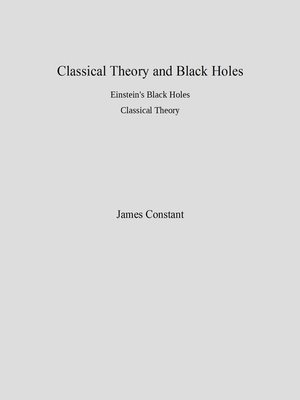
Sign up to save your library
With an OverDrive account, you can save your favorite libraries for at-a-glance information about availability. Find out more about OverDrive accounts.
Find this title in Libby, the library reading app by OverDrive.



Search for a digital library with this title
Title found at these libraries:
| Library Name | Distance |
|---|---|
| Loading... |
Classical theory looks at Einstein's black holes and Hawking radiation. The observational evidence points to the Event Horizon Telescope (EHT) which captured an apparent black hole on 30 April, 2019. If an absorber, the black hole image would be a doughnut with a dark center, as shown in the image detected. Such case would increase the black hole energy and presumably quickly (1) explode it and (2) create gravitational waves. Thus, classical theory predicts the apparent existence of black holes because there is no evidence of (1) and no evidence of (2) associated with (1). Classical theory concludes black holes do not themselves emit any electromagnetic radiation including the hypothetical Hawking radiation.It appears the apparent black hole in the image detected falls short of being a black hole by an order of magnitude required by classical theory.







